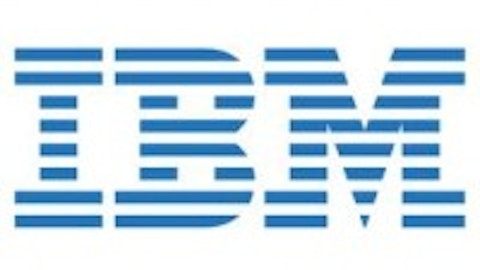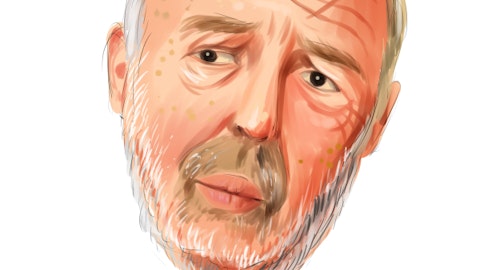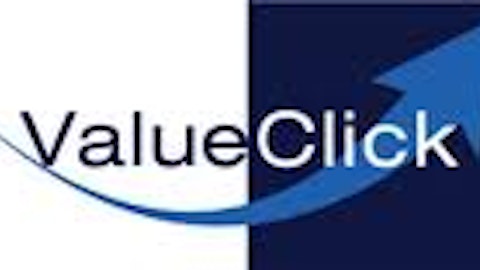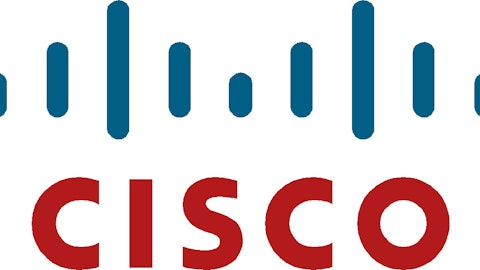Speaking phonetically, there is no difference between SYSCO Corporation (NYSE:SYY) and Cisco Systems, Inc. (NASDAQ:CSCO). Speaking in business terms, there are few obvious similarities. Unlike the divorcing couple in the old movie Kramer vs. Kramer, Cisco vs. Sysco is not a bitter struggle between competing rivals but a way to compare two unrelated businesses that might yield some insight into their investment potential.
Cisco Sysco
Industry technology food distribution
market cap $109 billion $18 billion
revenue (trailing 12 month) $46.7 Billion $42.9 billion
dividend yield 2.7% 3.6%
payout ratio (trailing 12 month) 28% 57%
Operating Cash Flow yield 10.7% 7.6%
Free Cash Flow yield 9.6% 3.6%
revenue per employee (3 year avg.) $620,000 $850,000
annual total return (10 year average) 3.35% 2.50%
ROIC (10 yr. average) 16.35% 19.98%
annual growth rate of revenue (10 yr.) 10.4% 5.5%
annual growth rate of EPS (10 yr.) 12.9% 5.4%
annual growth rate of OCF (10 yr.) 9.1% 0.3%
annual growth rate of FCF (10 yr.) 9.7% -4.5%
CEO tenure January 1995 March 2009
% of shares held by insiders less than 0.2% less than 0.5%
% of revenue in United States ~ 50% ~ 90%
With a market cap to revenue ratio of 2.3x, Cisco is much more highly valued than Sysco at just 0.4x. This disparity is due to the divergent growth outlooks of their respective industries (technology vs. food distribution) and to the growth of the companies themselves. Juniper Networks, Inc. (NYSE:JNPR), which identifies Cisco as its main competitor in the network infrastructure segment, carries a ratio of 2.5x. Sysco is the only publicly traded food distribution company, so the grocery chain The Kroger Co. (NYSE:KR) offers a rough proxy for comparison. Kroger trades at a market cap to revenue ratio of 0.2x, in line with Sysco. Over the past 10 years, Cisco has grown its revenue by more than 10% annually, while Sysco by only slightly more than 5%.
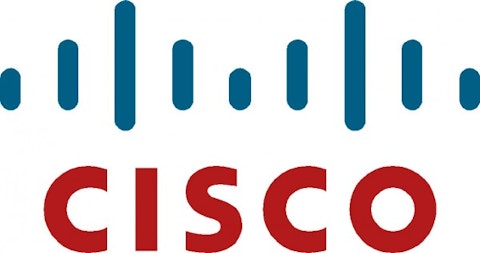
One unsurprising insight that became apparent from the tale of the tape is that the gap in free cash flow yield (FCF/market cap) between Sysco and Cisco is much smaller than the gap in operating cash flow yield (OCF/market cap). This is as expected, due to the significant difference in capital expenditures required for the capital-intensive food distribution operations of Sysco. Sysco spends about 4% of its market cap on CAPEX, compared to only about 1% for Cisco. Additionally, Sysco has about 30% of its total assets in its Property, Plant & Equipment, while Cisco has less than 5%.
Finally, investors in either Cisco or Sysco should be well aware that Cisco is a global story with only 50% of its revenue derived in the United States, whereas Sysco is primarily a domestic economic play with 90% of its revenue generated domestically. These differing geographic footprints create both risks and opportunities for each company. While Cisco enjoys a more diversified revenue base and more potential growth from multiple countries, Sysco is exposed to a downturn in a single economy and its growth is limited to the U.S. The flip side is that Cisco is exposed to more potential competitors in its many locations, while Sysco’s business is essentially protected from overseas competition here in the U.S.
The analysts’ consensus estimate of EPS growth through fiscal 2014 for Cisco is 18%, which yields a forward PE of under 10x and a forward price to earnings to growth (PEG) multiple of 0.5x. This compares very favorably to the 1.6x PEG multiple of Juniper, which analysts estimate will grow earnings by around 13% over the next two fiscal years. Hewlett-Packard, which reported an earnings loss for the October 2012 fiscal year, is expected to grow its EPS by 8% in 2014 which indicates a forward PEG of 0.6x. Cisco is my preferred stock based on this preliminary look at PEG, but a deeper dive into the catalysts for the estimated growth rate of each company is needed to determine their reasonableness. This effort might suggest, for example, that Hewlett-Packard is a better prospect at its current price if you believe that CEO Meg Whitman will succeed in turning around the company.
At its recent price and an estimated EPS growth rate of 8%, Sysco trades at a PEG multiple of 1.7x, which is near the high end of my preferred 1x-2x range. For comparison, Kroger carries a PEG multiple of 1.3x with analysts estimating forward EPS growth of about 7%. A company trading closer to 2x than 1x often has a high growth rate (usually above 15%) and a high PE as investors chase that growth. In the case of Sysco, the growth rate is not high, but is elevated above its own historic level of around 5%. The current PEG multiple appears reasonable given that EPS growth is expected to be higher than in the past and the forward PE of under 14x is below the long term trailing PE average of around 16x. I am reasonably confident that this growth rate can be achieved, and thus the PEG justified, given the room Sysco has to improve its profit margins if revenue growth is stable.
Examining the metrics of companies in unrelated industries can illustrate facts that confirm our assumptions about the respective companies or that are counter to these assumptions. In the case of Cisco vs. Sysco, the most striking metric to emerge was their underperformance relative to the S&P 500 over the past decade despite returns on invested capital at about 16% and 20%, respectively. At these levels, the companies are clearly creating value by earning more than their cost of capital. Because the market has not rewarded this value creation, Cisco and Sysco are interesting long term holdings that ultimately should outperform the broad market.
The article Buy! or Bye Bye? originally appeared on Fool.com.
Copyright © 1995 – 2013 The Motley Fool, LLC. All rights reserved. The Motley Fool has a disclosure policy.
